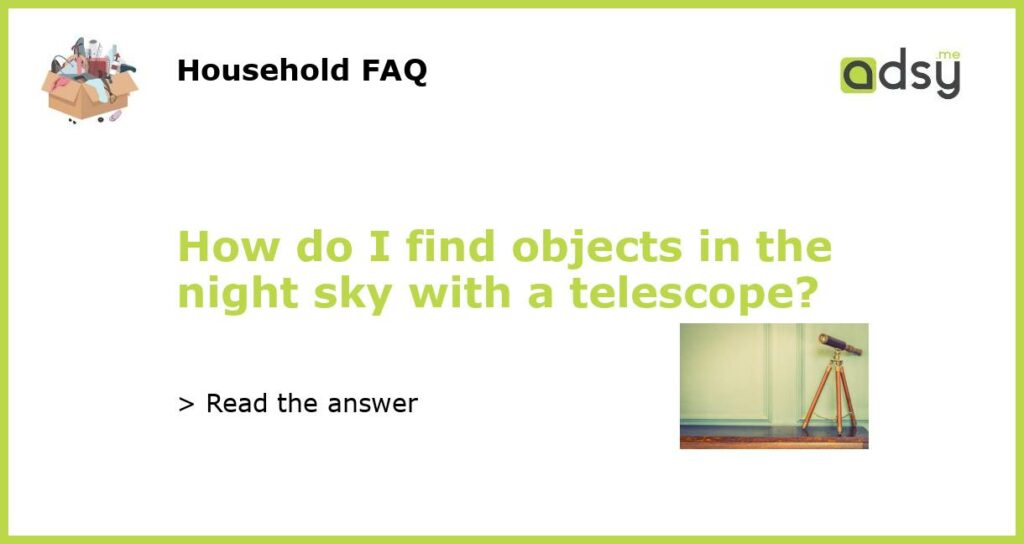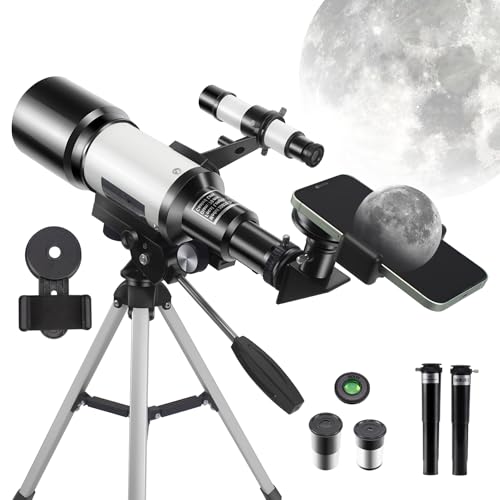Understanding Telescope Basics
Before you can start finding objects in the night sky with a telescope, it’s important to have a basic understanding of how telescopes work. Telescopes collect and focus light, allowing you to see objects that are far away and too dim to be seen with the naked eye.
There are two main types of telescopes: refracting telescopes and reflecting telescopes. Refracting telescopes use a series of lenses to bend and focus light, while reflecting telescopes use mirrors to gather and reflect light. Both types have their advantages and disadvantages, but for the purpose of finding objects in the night sky, either type will work.
Choosing the Right Telescope
When it comes to finding objects in the night sky, the type and quality of your telescope will play a big role in your success. It’s important to choose a telescope that is appropriate for your needs and budget.
For beginners, a small to medium-sized telescope with a wide field of view and low magnification is generally recommended. This will allow you to easily locate and track objects in the sky. Look for telescopes with an aperture of at least 60mm to ensure good light-gathering ability.
If you’re more experienced or have a larger budget, you may want to consider a larger aperture telescope. These telescopes can gather more light, allowing for greater detail and the ability to see fainter objects. However, keep in mind that larger telescopes can be more difficult to set up and transport.
Preparing for Observation
Before you can start finding objects in the night sky, you’ll need to make sure you’re properly prepared for your observation. Here are a few things to consider:
- Location: Find a location away from city lights, as light pollution can make it difficult to see faint objects in the sky.
- Time: Plan your observation for a clear night with minimal moonlight. The best time to observe is typically around midnight when the sky is darkest.
- Weather: Check the weather forecast to ensure clear skies and minimal cloud cover.
- Eyesight: Let your eyes adjust to the darkness for at least 20 minutes before using your telescope. Avoid looking at bright lights or using electronic devices during this time.
Using Star Charts and Apps
One of the easiest ways to find objects in the night sky is by using star charts or mobile apps. Star charts are maps of the night sky that show the positions of stars, constellations, and other celestial objects. You can either print out a star chart or use a mobile app to navigate the night sky in real-time.
When using a star chart or app, start by locating a well-known star or constellation and use it as a reference point. Once you’ve found your reference point, use the star chart or app to locate the object you want to observe. It may take some time and practice to become comfortable with using star charts, but with practice, it will become easier.
Star-Hopping Techniques
Another method for finding objects in the night sky with a telescope is using star-hopping techniques. Star-hopping involves using well-known stars or star patterns to navigate from one object to another.
To use star-hopping, start by locating a bright star near the object you want to observe. Then, using a star chart or app, find another star or star pattern near your target object. Use these stars as guideposts to navigate your telescope to the desired object. This method requires some knowledge of the night sky and can be more challenging than using a star chart, but it can also be more rewarding and allow for a deeper understanding of the night sky.
By understanding telescope basics, choosing the right telescope, preparing for observation, using star charts and apps, and utilizing star-hopping techniques, you’ll be well on your way to finding objects in the night sky with a telescope. Remember to be patient and give yourself time to learn and practice these techniques. Happy stargazing!






